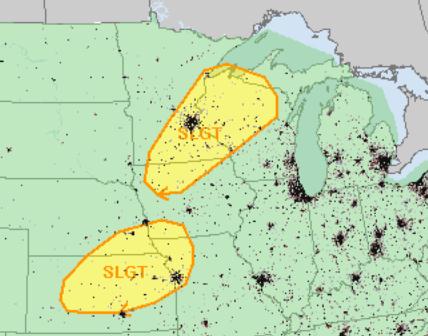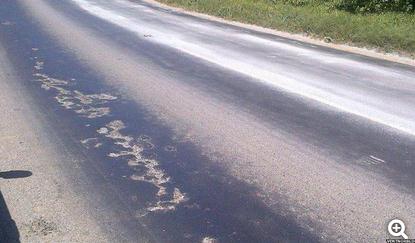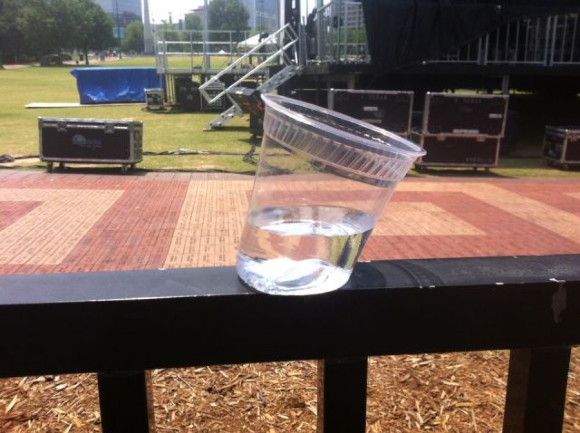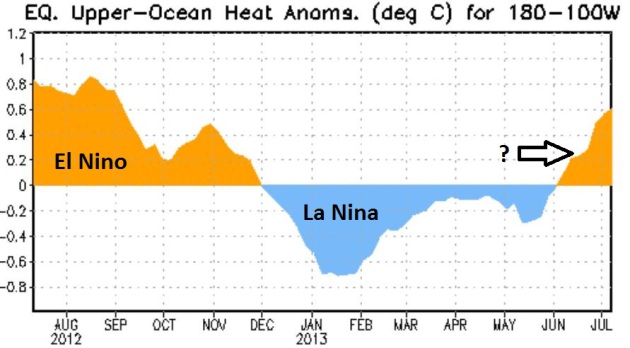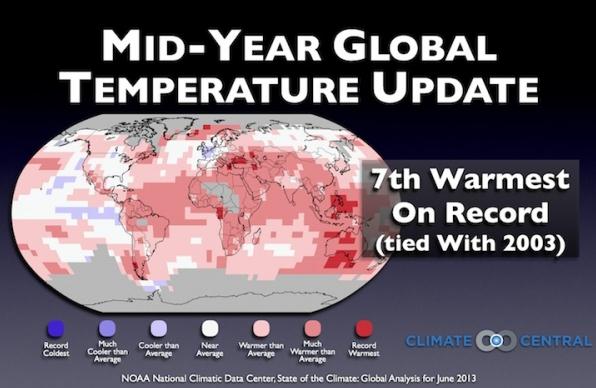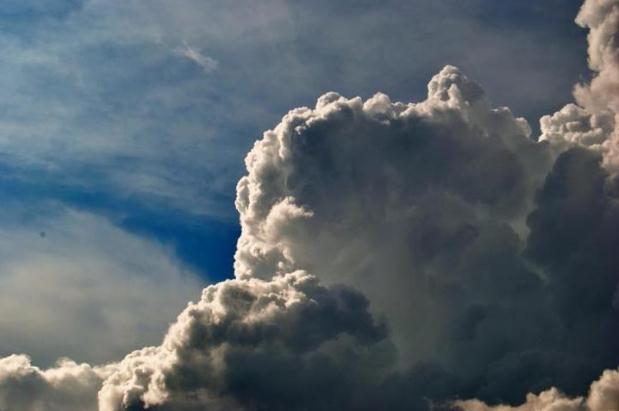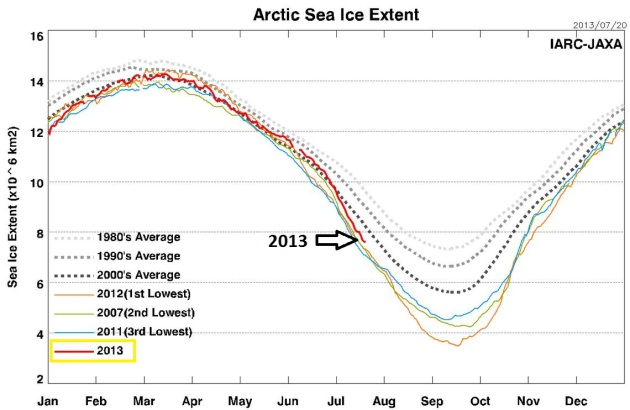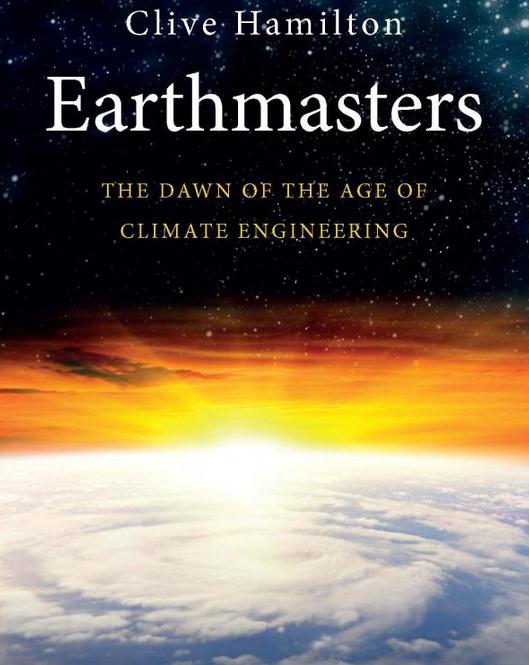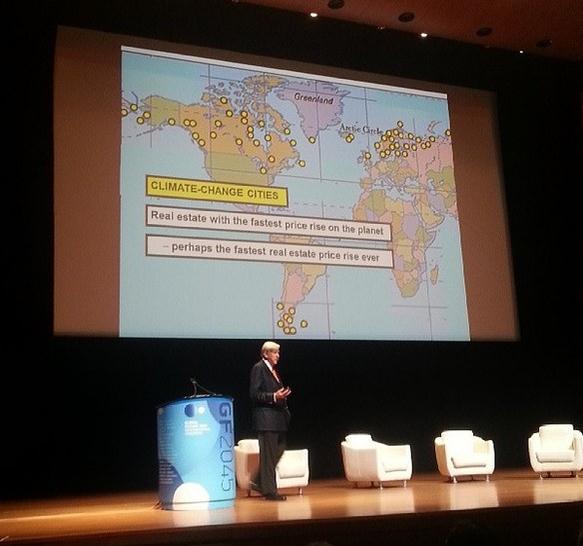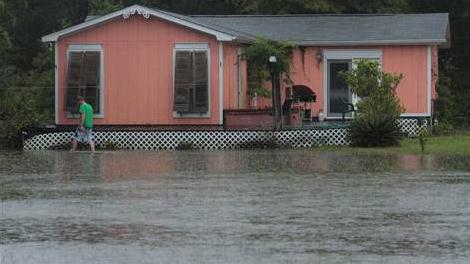A Data-Driven Life
"Speak the truth, even if your voice shakes." I
understand why many TV meteorologists don't want to talk about climate
change. It's kryptonite in a business of Q scores & research, where
popularity is critical. I get it.
I ask people if they're open to new data, or if
their mind is made up. At the Star Tribune I started sharing what I was
witnessing on the weather maps in the 90s; trends that have only
accelerated since 2000.
As an entrepreneur if I don't respect data I
quickly go out of business. Healthy skepticism is a good thing, but
denial, in the face of overwhelming evidence, is baffling. Science isn't
a popularity contest.
I'm still a naive optimist though. We'll figure
this out. Because we won't have much of a choice. My hope? That you keep
an open mind. Even if you don't believe climate scientists - at least
believe your own eyes. In today's weather blog: we're on track for
another potentially record loss of arctic ice. One more data point.
Today looks sticky with a severe T-storm threat.
Cooler, drier Canadian air returns Tuesday, in fact I see a cooler bias
in our pattern looking out the next 2 weeks.
I'm OK not having to answer "Is it hot enough for 'ya Paul?"
Monday Severe Threat. NOAA SPC has a slight risk
from Duluth to the Twin Cities, Rochester and Mankato, another area of
elevated risk from Omaha to Kansas City to Wichita. The biggest risk is
large hail and straight-line winds.
Not Nearly As Hot. Last week we enjoyed (?) 3 days
above 90F, 7 days of 90s since July 1. This week will be cooler, with
highs closer to 80F. A few T-storms today give way to a cooler front and
drop in humidity Tuesday, a ripple of low pressure in a northwest wind
flow aloft sparking a few more showers and T-storms Wednesday, again
Friday. High temperatures above in Celsius.
Slow-Motion Weather Pattern. A nearly stationary
swirl of low pressure sparks more heavy showers and T-storms from the
Carolinas into New England into midweek, while the next puff of Canadian
air sparks a few strong/severe storms over Minnesota today, pushing
into the Great Lakes by Wednesday. Still no significant rain for the
west coast looking out 84 hours. NAM model courtesy of NOAA.
Hot Tips To Cool Pets When Summer Temperatures Soar. Among the suggestions offered in this timely Op-Ed from
LiveScience:
1). Never leave your pets in a parked car, 2). Watch the humidity, 3).
Limit exercise on hot days, 4). Don't rely on a fan, 5). Provide ample
shade and water, and 6). Cool your pet inside and out, and that's just
a few of the tips worth checking out. Yes, dogs, cats and horses feel
the heat as much as we do.
Road-Melting Heat. You think it was hot here? In
part of the United Kingdom it's so hot that roads are beginning to melt.
A Level 3 Heat Warning has been issued for much of England; details
from The BBC and
audioboo.fm.
No Air Conditioner? How To Keep Your Cool No Matter How Hot It Gets. I thought some of the reader suggestions at this post at
apartmenttherapy.com were on the money; here's an excerpt: "
Now
that the high temps have really kicked in, it's hard to remember that
this is the season everyone longs for during the darker, colder
months of the year. Ha! If your home doesn't have AC (or you are
choosing to leave it off as much as possible) you can feel stuck,
especially when it comes to getting a restful nights sleep. Thankfully
our readers have come to the rescue with a long list of tips ranging
from from absolutely quirky (but they swear they work!) to "why didn't I
think of that!?" good old common sense ideas . Bookmark this quick
list of possible solutions and get started on your a cooldown plan!
Freeze a 2 liter bottle with water. Put in a pillow case
and hold to your chest like a teddy. Cooling down the central core
will cool down all extremities as a result. My roomie calls them "ice
babies". - Novalis..."
Flash Drought? Not Just Dust Blowin' In The Wind.
This is the first time I've heard the expression "flash drought", but it
fits right in with the definition of "weather whiplash". Here's the
intro to a story from
The Sioux City Journal: "
The
2011-2012 drought finally washed downstream in April and May (2013),
successive record-setting months for moisture in Iowa. Seems like more
than a couple of months ago, according to Iowa State Climatologist Harry
Hillaker. "Flash drought is the popular term now," says Hillaker, who
assured me in early June the drought had ended. "This is what you'd
call a drought in a hurry." Hillaker believes the term originated in
Texas or Oklahoma, states accustomed to feast or famine when it comes to
heat and rain. In Siouxland and across western Iowa, the sky was
falling throughout the spring, replenishing aquifers and subsoil when
not closing roads and damaging bridges. The rains abated not long
after. Been more than three weeks since rain graced Siouxland lawns and
crops..."
Photo credit above: Tim Gallagher, Sioux City Journal. "
Corn
tassels southwest of Kingsley, Iowa, on Saturday. Much of the
Siouxland corn crop has endured heat, wind and virtually no rain for
more than three weeks, prompting concerns about a "flash drought."
Drought Update. For the first time since May, 2005 drought conditions are not showing up anywhere east of the Mississippi River. Map:
U.S. Drought Monitor.
Creeping Back Into El Nino? It's premature to make
any pronouncements, but after an extended La Nina cooling phase from
December of last year through late May, there are some signs the
equatorial Pacific is warming up again. More details than you ever
wanted to see, courtesy of
NOAA's Climate Prediction Center.
7th Warmest Start To The Year On Record. In spite of
a persistently chilly spring over much of the USA, taking a step back
and looking at global temperature trends for 2013 tells a different
story.
Climate Central has the details: "
Global
temperature records are in for first half of the year, and they
indicate a planet with no intention of cooling off. On Thursday, the
National Oceanic and Atmospheric Administration released its analysis
for the period from January to June. They show that six-month span ties
with 2003 as the seventh warmest on record since 1880. Temperatures
averaged over both land and sea ran 1.06°F above the 20th century
average.
Some of the highlights include:
- The land temperature alone is the sixth warmest on record, running 1.80°F above average.
- The ocean temperature alone is seventh warmest, running 0.79°F above average.
- While this was the seventh-warmest start to the year,
some regions of the world experienced their warmest January-June on
record. These include parts of Eastern Europe, Southeast Asia and
Australia, which had to add a new color to its temperature map to account for the extreme heat.
- June marks the 340th consecutive month —
a total of more than 28 years — with a global temperature above the
20th century average. The last below-normal month was February 1985."
Graphic credit above: "
A map showing January-June temperatures across the globe." Credit: NOAA & Climate Central
Sequestration Could Curtail "Hurricane Hunter" Missions.
This would not be a good development. Meteorologists can only glean so
much from satellite imagery - there is a data-driven need to fly
planes into tropical storms and hurricanes, to get a better fix on
position, estimate strength, and future development. Bottom line:
forecast accuracy could be compromised, especially for large hurricanes
approaching landfall.
WWNO.org has the story; here's the intro: "
Federal
furloughs caused by sequestration could ground "Hurricane Hunter"
aircraft, depriving forecasters of real-time measurements of storms
during what's expected to be an especially active Atlantic hurricane
season. While NOAA operates some of the Hurricane Hunters, most of the
modified C-130s transports
that fly into storms to gather vital information on their position,
strength and direction are flown by the Air Force Reserve's 53rd Weather Reconnaissance Squadron. The unit is part of the larger 403rd Wing based in Biloxi, Miss. The Vice Commander of the 403rd, Col. Craig La Fave, told Miami TV affiliate WPLG that, "while NOAA is exempt of the furloughs, we are not..."
Photo credit: AP.
Before Air Conditioning. Yes, we feel it's our
birthright to whine about the heat, as most of us dart from one air
conditioned space to the next. How did our parents and grandparents get
by? This story from
The New Yorker gives us a glimpse; here's an excerpt: "...
My
first direct contact with an air-conditioner came only in the
sixties, when I was living in the Chelsea Hotel. The so-called
management sent up a machine on casters which rather aimlessly cooled
and sometimes heated the air, relying, as it did, on pitchers of water
that one had to pour into it. On the initial filling, it would spray
water all over the room, so one had to face it toward the bathroom
rather than the bed. A South African gentleman once told me that New
York in August was hotter than any place he knew in Africa, yet people
here dressed for a northern city. He had wanted to wear shorts but
feared that he would be arrested for indecent exposure."
Photo credit:
verydemotivational.com.
New York Man Just Going To Stick An Entire Air Conditioner In His Car Window. Hey, why not? If you're hot enough you'll try anything. Details from
New York Magazine: "
Courtesy of our friends at the Lo-Down,
here's a photo of an SUV, on Pitt Street in the Lower East Side, with
a standard window air conditioner unit in a back window (à la Mayor Bloomberg,
except it's not stationary). Maybe the car's A/C is broken, or maybe
this guy just likes being really, really cold. Either way, if you were
already afraid of air conditioners falling from the sky — and you should be — now you have to worry about them hurtling out of speeding cars as well. Flying air conditioners are our Sharknado."
The Vitamin Myth: Why We Think We Need Supplements.
After reading some recent scientific papers and articles I've stopped
taking multivitamins. Here's an excerpt of another article that caught
my eye in
The Atlantic: "
On
October 10, 2011, researchers from the University of Minnesota found
that women who took supplemental multivitamins died at rates higher
than those who didn't. Two days later, researchers from the
Cleveland Clinic found that men who took vitamin E had an increased
risk of prostate cancer. "It's been a tough week for vitamins,"
said Carrie Gann of ABC News. These findings weren't new. Seven previous
studies had already shown that vitamins increased the risk of cancer
and heart disease and shortened lives. Still, in 2012, more than
half of all Americans took some form of vitamin supplements. What few
people realize, however, is that their fascination with vitamins
can be traced back to one man. A man who was so spectacularly right
that he won two Nobel Prizes and so spectacularly wrong that he was
arguably the world's greatest quack..."
Photo credit:
slipah/Flickr
* photo above courtesy of Edward Sklar.
Climate Stories....
Arctic Sea Ice Approaching Another Record Low. Latest data from The Arctic Sea-Ice Monitor at
IARC-JAXA
shows the rapid decline in Arctic sea ice, on a similar path as last
year (and 2011 and 2007). Last September saw the greatest loss of sea
ice on record. We are on track for more severe ice loss in the coming
months.
The Big Idea: Can We Outsmart Climate Change? Is
there a quick fix, a geo-engineering solution to counter a rapid
increase in greenhouse gases? Here's a clip from a story about
geo-engineering and the need for more politics (?) from
The Daily Beast: "...
No
wonder right-wing think tanks like the American Enterprise Institute,
the Cato Institute and even the Heartland Foundation—organizations that
have for years spread disinformation about climate science and
attacked policies aimed at cutting emissions—have come out in support
of geoengineering. There is a danger that geoengineering may become the
preferred solution of conservatives, because it seems to protect the
political-economic system from change. It’s time more progressive
opinions, and scientists with a less Promethean view of the world,
became involved. There are some of the latter, like Alan Robock, but
more need to be heard. One thing is clear: American citizens need to
learn about geoengineering and become engaged in the debate because at
present less than 5 percent know what it is. It’s not going to go away.
In fact, as I see it, geoengineering as a response to global warming
is destined to be the dominant question of the 21st century."
Saudi Arabia Allocates $109 Billion For Renewable Energy Shift.
Business Standard has the story - here's a clip: "
Saudi Arabia, world's largest oil exporter,
aims to meet one-third of its energy demands by using renewable energy
by 2032, setting aside a budget of $109 billion for achieving the
goal. The oil-rich Gulf Kingdom gave details of its plans in a series of
documents containing the revised National Energy Plan, released by the
King Abdullah City for Atomic and Renewable Energy.
According to the documents, in addition to solar power, Saudi Arabia is
looking at using nuclear energy, geothermal energy and wind power to
fulfill its ambitious target of producing 54 GW of energy through
renewable resources in the next two decades..."
Movement Aims To Curb Climate Change Through Divestment In Fossil Fuel. The Milwaukee Journal Sentinel has the story; here's the introduction: "
A
Milwaukee church and the cities of Madison and Bayfield are part of a
fledgling national movement that has decided to fight climate change by
pushing for divestment from fossil fuel companies. Students and climate
activists in Madison are also pushing the UW Foundation to divest its
holdings in fossil fuel companies. First Unitarian Society of Milwaukee —
part of the Unitarian Universalist Association, a national
organization of the progressive-leaning church denominations — says it
is the first religious institution in the country to announce plans to
sell its holdings in fossil fuel companies. The national divestment
effort received a one-word plug during President Barack Obama's climate
change address last month. "It is really starting to feel like a
movement," said James Irwin, senior associate with the Mayors
Innovation Project, a project of the Madison-based think tank Center on
Wisconsin Strategy. "We're up to 19 local governments that have
committed to divesting, ranging from Seattle, San Francisco and Santa
Fe, fairly large cities, all the way down to Bayfield..."
Hypocrites Vs. Climate Change. Do unto Exxon as you would do unto yourself, this Op-Ed suggests. The problem is demand, not supply. Here's an excerpt from
The Pittsburgh Post-Gazette: "
The
resolution on climate change approved last month by the General Synod
of the United Church of Christ has garnered mostly admiring attention
from the news media. But I admit to a degree of perplexity and sorrow
over the document, which seems to place the blame for our heavy use of
fossil fuels mostly on the companies that produce them -- not the
consumers who demand them. The resolution is intended to create a path
toward divestment of church funds, including pension money, from
"fossil fuel companies" unless they meet certain benchmarks. The text
never defines "fossil fuel companies," but it's a good bet that the
target is oil and mining enterprises..." (Image: Oil Technica).
Are The East Coast Heat Waves Related To Global Warming? A warmer, wetter atmosphere is flavoring all weather now.
LiveScience.com takes a look - here's a clip: "...
however,
a combination of rain and heat leads to high humidity, which is being
seen in many place currently. And humidity can lead to higher nighttime
temperatures, which are a major factor in deaths from heat, said Jeff
Weber, a scientist with the University Corporation for Atmospheric
Research in Boulder, Colo. Hot nights don't allow people to cool down
and get some relief, Weber said. As the Earth continues to warm, heat
waves are tending to last longer, Weber told LiveScience. The jet
stream, which generally ferries weather patterns from west to east
across North America, is driven by a difference in temperature between
the cold Arctic and warmer equator. Polar regions are heating faster
than the equator is, which is leading to a weaker jet stream, Weber
said. That means weather systems, like high pressure systems with high
temperatures, tend to stay in place longer, he added."
Photo credit above: "
A crossing guard tries to cool off
with a bottle of water while working on a sweltering street in New
York's Chinatown, Friday, July 19, 2013. A punishing heat wave
continues to scorch New York, threatening to break heat records and
putting a huge strain on the state’s overworked power grid." (AP Photo/Jon Gerberg)
The Climate Change Real Estate Boom Is Coming. I'm
no futurist, but I strongly believe that Minnesota and the Twin Citiies
will benefit from warming temperatures, as will many northern cities
and southern Canada. Others envision a real estate boom for many
northern cities, well away from rising seas, persistent heat waves,
wildfires and water shortages plaguing much of the south. Here's a clip
of an interesting story at
fastcoexist.com: "
Fabulously wealthy British futurist James Martin spoke about climate change at New York’s Lincoln Center and how it will change global population patterns in one of his last public appearances before passing away
on June 30 at 79 years of age. Martin, who donated more than $150
million to Oxford University and lived on his own private Bermudan
island, believed one of the biggest land booms in history is on its
way--and it will happen in less than 100 years. At the June 15 Global Future 2045
conference, Martin explained that events like Superstorm Sandy and
Hurricane Katrina will hit major American cities harder and more
frequently because of climate change. Scientists and politicians have
even come to the conclusion that whole countries such as Mauritius and Tuvalu
will need to evacuate due to rising sea levels. But while coastlines
in much of the world may suffer, climate change will be a positive
development in some areas. Specifically, Canada; northern Europe;
Russia; Alaska; Patagonia, Argentina; and southern Africa may all
experience real estate booms. These booms, he claimed, will be in
“Climate Change Cities” with military fortifications catering to an
increasingly displaced global elite..."
Like Butter: Study Explains Surprising Acceleration Of Inland Ice.
Think Progress has the story - here's the intro: "
In 2011, scientists explained that the Greenland Ice Sheet “could undergo a self-amplifying cycle of melting and warming” that is “difficult to halt.” Last November, a major international study
in the journal Science found that the Greenland ice sheet’s melt rate
was up nearly 5-fold since the mid-1990s. This acceleration has put
ice sheet loss far ahead of what most climate models had predicted
several years ago. Now a new study by scientists at the Cooperative
Institute for Research in Environmental Sciences (CIRES) in the
Journal of Geophysical Research: Earth Surface explains at least one
key factor the models have missed:
Surface meltwater draining through cracks in an ice sheet can warm the sheet from the inside, softening the ice and letting it flow faster..."
Photo credit above: "
Meltwater from the surface of the
Sermeq Avannarleq Glacier drains down toward interior ice. This
photograph depicts a region about 10 miles from the ice sheet margin in
Southwest Greenland. A new CIRES-led study helps explain the
surprising acceleration of inland ice. Meltwater draining through the
ice likely warms the ice sheet from the inside and like a stick of warm
butter, the sheet softens, deforms and can flow faster." Photo: CIRES.
Here's An Easy Way To Protect Coastal Communities From Rising Seas And Storms.
Grist has the story - here's an excerpt: "...
Led by Stanford University’s Natural Capital Project,
researchers mapped the intensity of hazards posed to communities
living along America’s coastlines from rising seas and ferocious storms
now and in the decades to come. They examined the hazards those
communities would face in the year 2100 with and without the coastal
habitats left intact. Here is what they found:
Habitat loss would double the extent of coastline highly exposed
to storms and sea-level rise, making an additional 1.4 million people
now living within 1 km of the coast vulnerable. The number of poor
families, elderly people and total property value highly exposed to
hazards would also double if protective habitats were lost..."
Image credit: Dan Anderson, EPA.
This Is What Fracking Really Looks Like. All those
feel-good commercials on TV from energy companies extolling the virtues
of oil and natural gas? There's another side to this story.
Slate has the story (and photos) - definitely worth a look. Here's a clip from the article: "
Photographer Nina Berman
had just started focusing on climate and environmental issues when
she read an article about fracking and its connection to the possible
contamination of New York City’s drinking water. Berman resides in New
York and knew very little about how the controversial process of
drilling for natural gas via hydraulic fracturing worked and decided to
head to Pennsylvania for Gov. Thomas Corbett’s inauguration in 2011.
“I knew there would be demonstrators (opposed to his support of
natural gas drilling), and I wanted to learn what they were screaming
about,” Berman said. After researching the issues, she then had to
figure out how to document them in a visual way. “It’s a very hard
subject to photograph,” Berman explained. “You see a drill, and you
don’t know what that means, and then it disappears. What does that
mean? It took me a while to figure out how to approach it...”
Photo credit above: "
Jodie Simons demonstrates how her
sink water, full of methane, lights on fire. Simons' household's water
was pristine before gas drilling started, but now they've been without
clean drinking or bathing water for months." Nina Berman/NOOR.
Koch-Funded Climate Contrarians Make Mischief On Capitol Hill.
Huffington Post has an update; here's an excerpt: "
With
Congress about to head out of town for its summer recess, a
Washington-based think tank is ramping up a campaign to foil any
attempts to institute a tax on carbon emissions, The Hill, a Washington
political trade publication, reported
this week. "We're hoping to put the final nail in the coffin of the
carbon tax," said Benjamin Cole, the communications director for the
Institute for Energy Research (IER) and its advocacy arm, the American
Energy Alliance (AEA). "The proposal should be dead on arrival by the
time lawmakers come back from August recess." IER's campaign includes a
survey of American attitudes about such a tax and a $120,000 to
$150,000 radio ad buy targeting a handful of House members who,
according to Cole, "are soft on the carbon tax issue..."
Photo credit above: "
Robert P. Murphy, an economist with
the Koch-funded Institute for Energy Research, essentially told a
Senate committee yesterday that carbon emissions are harmless."
Cities Taking Initiative On Climate Change Preparedness.
Minneapolis and St. Paul are two of the cities not waiting for
Washington D.C. to take action on climate change. Here's an excerpt of a
story at
Climate Science Watch: "...
So,
while the ability to adapt to global climatic disruption will be
limited, and while preparedness can't substitute for a radical
transformation to a sustainable energy system, I think these are good
developments:
However, a combination of rain and heat leads to high humidity,
which is being seen in many places currently. And humidity can lead to
higher nighttime temperatures, which are a major factor in deaths from
heat, said Jeff Weber, a scientist with the University Corporation
for Atmospheric Research in Boulder, Colo.
Hot nights don't allow people to cool down and get some relief, Weber said.
As the Earth continues to warm, heat waves are tending to last longer, Weber told LiveScience. The
jet stream,
which generally ferries weather patterns from west to east across
North America, is driven by a difference in temperature between the
cold Arctic and warm equator. Polar regions are heating faster than the
equator is, which is leading to a weaker jet stream, Weber said.
That means weather systems, like high-pressure systems with high temperatures, tend to stay in place longer, he added.
- See more at: http://www.livescience.com/38315-heat-waves-global-warming.html#sthash.GKiAGaxH.dpu
Cities Taking Initiative On Climate Change Preparedness.
Minneapolis and St. Paul are two of the cities not waiting for
Washington D.C. to take action on climate change. Here's an excerpt of a
story at
Climate Science Watch: "...
So,
while the ability to adapt to global climatic disruption will be
limited, and while preparedness can't substitute for a radical
transformation to a sustainable energy system, I think these are good
developments:
45 Top Mayors Pledge Action on Extreme Weather, Launch National Resilience Campaign
Mayors of Washington DC, Denver,
Cincinnati, Sacramento, San Diego, Milwaukee, El Paso, Broward County
and others—commit to creating more resilient cities and counties in
response to nation’s growing extreme weather, climate and energy
challenges; call for greater federal support
[Washington DC, June 17, 2013] –
Forty five leading local elected officials today committed to creating
more resilient cities, towns, and counties in the face of
unprecedented extreme weather and energy challenges that threaten
communities across the country. The “Inaugural Signatories” of the Resilient Communities for America Agreement
letter pledged to take cost-effective actions to prepare and protect
their communities from the increasing disasters and disruptions fueled
by climate change, such as heat waves, floods, droughts, severe
storms, and wildfires. In addition, they called for more action and
support from federal leaders..."
Are The East Coast Heat Waves Related To Global Warming? A warmer, wetter atmosphere is flavoring all weather now.
LiveScience.com takes a look - here's a clip: "...
however,
a combination of rain and heat leads to high humidity, which is being
seen in many place currently. And humidity can lead to higher nighttime
temperatures, which are a major factor in deaths from heat, said Jeff
Weber, a scientist with the University Corporation for Atmospheric
Research in Boulder, Colo. Hot nights don't allow people to cool down
and get some relief, Weber said. As the Earth continues to warm, heat
waves are tending to last longer, Weber told LiveScience. The jet
stream, which generally ferries weather patterns from west to east
across North America, is driven by a difference in temperature between
the cold Arctic and warmer equator. Polar regions are heating faster
than the equator is, which is leading to a weaker jet stream, Weber
said. That means weather systems, like high pressure systems with high
temperatures, tend to stay in place longer, he added."
Photo credit above: "
A crossing guard tries to cool off
with a bottle of water while working on a sweltering street in New
York's Chinatown, Friday, July 19, 2013. A punishing heat wave
continues to scorch New York, threatening to break heat records and
putting a huge strain on the state’s overworked power grid." (AP Photo/Jon Gerberg)
The Climate Change Real Estate Boom Is Coming. I'm
no futurist, but I strongly believe that Minnesota and the Twin Citiies
will benefit from warming temperatures, as will many northern cities
and southern Canada. Others envision a real estate boom for many
northern cities, well away from rising seas, persistent heat waves,
wildfires and water shortages plaguing much of the south. Here's a clip
of an interesting story at
fastcoexist.com: "
Fabulously wealthy British futurist James Martin spoke about climate change at New York’s Lincoln Center and how it will change global population patterns in one of his last public appearances before passing away
on June 30 at 79 years of age. Martin, who donated more than $150
million to Oxford University and lived on his own private Bermudan
island, believed one of the biggest land booms in history is on its
way--and it will happen in less than 100 years. At the June 15 Global Future 2045
conference, Martin explained that events like Superstorm Sandy and
Hurricane Katrina will hit major American cities harder and more
frequently because of climate change. Scientists and politicians have
even come to the conclusion that whole countries such as Mauritius and Tuvalu
will need to evacuate due to rising sea levels. But while coastlines
in much of the world may suffer, climate change will be a positive
development in some areas. Specifically, Canada; northern Europe;
Russia; Alaska; Patagonia, Argentina; and southern Africa may all
experience real estate booms. These booms, he claimed, will be in
“Climate Change Cities” with military fortifications catering to an
increasingly displaced global elite..."
Like Butter: Study Explains Surprising Acceleration Of Inland Ice.
Think Progress has the story - here's the intro: "
In 2011, scientists explained that the Greenland Ice Sheet “could undergo a self-amplifying cycle of melting and warming” that is “difficult to halt.” Last November, a major international study
in the journal Science found that the Greenland ice sheet’s melt rate
was up nearly 5-fold since the mid-1990s. This acceleration has put
ice sheet loss far ahead of what most climate models had predicted
several years ago. Now a new study by scientists at the Cooperative
Institute for Research in Environmental Sciences (CIRES) in the
Journal of Geophysical Research: Earth Surface explains at least one
key factor the models have missed:
Surface meltwater draining through cracks in an ice sheet can warm the sheet from the inside, softening the ice and letting it flow faster..."
Photo credit above: "
Meltwater from the surface of the
Sermeq Avannarleq Glacier drains down toward interior ice. This
photograph depicts a region about 10 miles from the ice sheet margin in
Southwest Greenland. A new CIRES-led study helps explain the
surprising acceleration of inland ice. Meltwater draining through the
ice likely warms the ice sheet from the inside and like a stick of warm
butter, the sheet softens, deforms and can flow faster." Photo: CIRES.
Here's An Easy Way To Protect Coastal Communities From Rising Seas And Storms.
Grist has the story - here's an excerpt: "...
Led by Stanford University’s Natural Capital Project,
researchers mapped the intensity of hazards posed to communities
living along America’s coastlines from rising seas and ferocious storms
now and in the decades to come. They examined the hazards those
communities would face in the year 2100 with and without the coastal
habitats left intact. Here is what they found:
Habitat loss would double the extent of coastline highly exposed
to storms and sea-level rise, making an additional 1.4 million people
now living within 1 km of the coast vulnerable. The number of poor
families, elderly people and total property value highly exposed to
hazards would also double if protective habitats were lost..."
Image credit: Dan Anderson, EPA.
This Is What Fracking Really Looks Like. All those
feel-good commercials on TV from energy companies extolling the virtues
of oil and natural gas? There's another side to this story.
Slate has the story (and photos) - definitely worth a look. Here's a clip from the article: "
Photographer Nina Berman
had just started focusing on climate and environmental issues when
she read an article about fracking and its connection to the possible
contamination of New York City’s drinking water. Berman resides in New
York and knew very little about how the controversial process of
drilling for natural gas via hydraulic fracturing worked and decided to
head to Pennsylvania for Gov. Thomas Corbett’s inauguration in 2011.
“I knew there would be demonstrators (opposed to his support of
natural gas drilling), and I wanted to learn what they were screaming
about,” Berman said. After researching the issues, she then had to
figure out how to document them in a visual way. “It’s a very hard
subject to photograph,” Berman explained. “You see a drill, and you
don’t know what that means, and then it disappears. What does that
mean? It took me a while to figure out how to approach it...”
Photo credit above: "
Jodie Simons demonstrates how her
sink water, full of methane, lights on fire. Simons' household's water
was pristine before gas drilling started, but now they've been without
clean drinking or bathing water for months." Nina Berman/NOOR.

